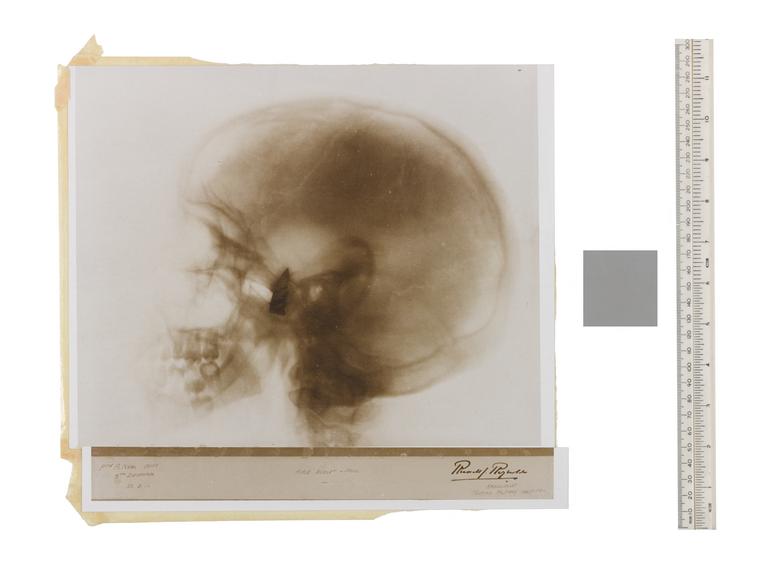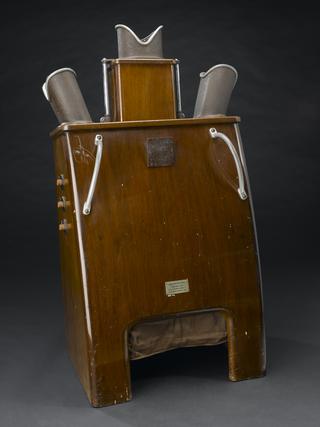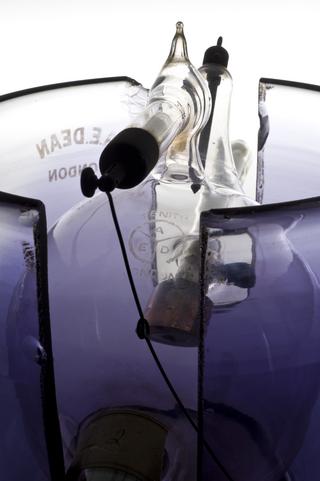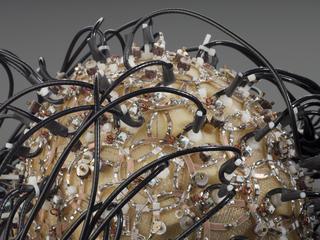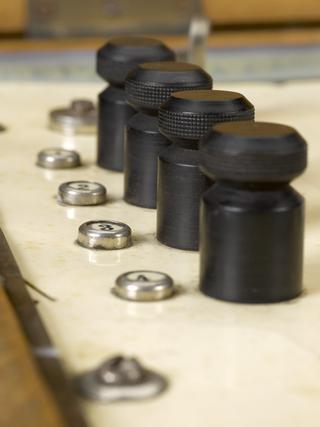Photographic print of x-ray taken by Russell Reynolds
This X-ray image of an injured soldier was taken by Russell Reynolds, an internationally renowned radiologist and specialist in the field of cineradiography (moving image X-ray films). While still at school, he – with the assistance of his GP father and physicist Sir William Crookes – constructed a fully functioning X-ray machine just months after German scientist Wilhelm Röntgen first described the ‘new type of ray’ in late 1895.
Qualifying as a doctor in 1907, Reynolds spent two years in general practice with his father before becoming a full-time radiologist. During World War I, he served with the Royal Army Medical Corps in British military hospitals before being appointed physician-in-charge of the X-ray departments of Charing Cross and the National Hospitals in 1921.
